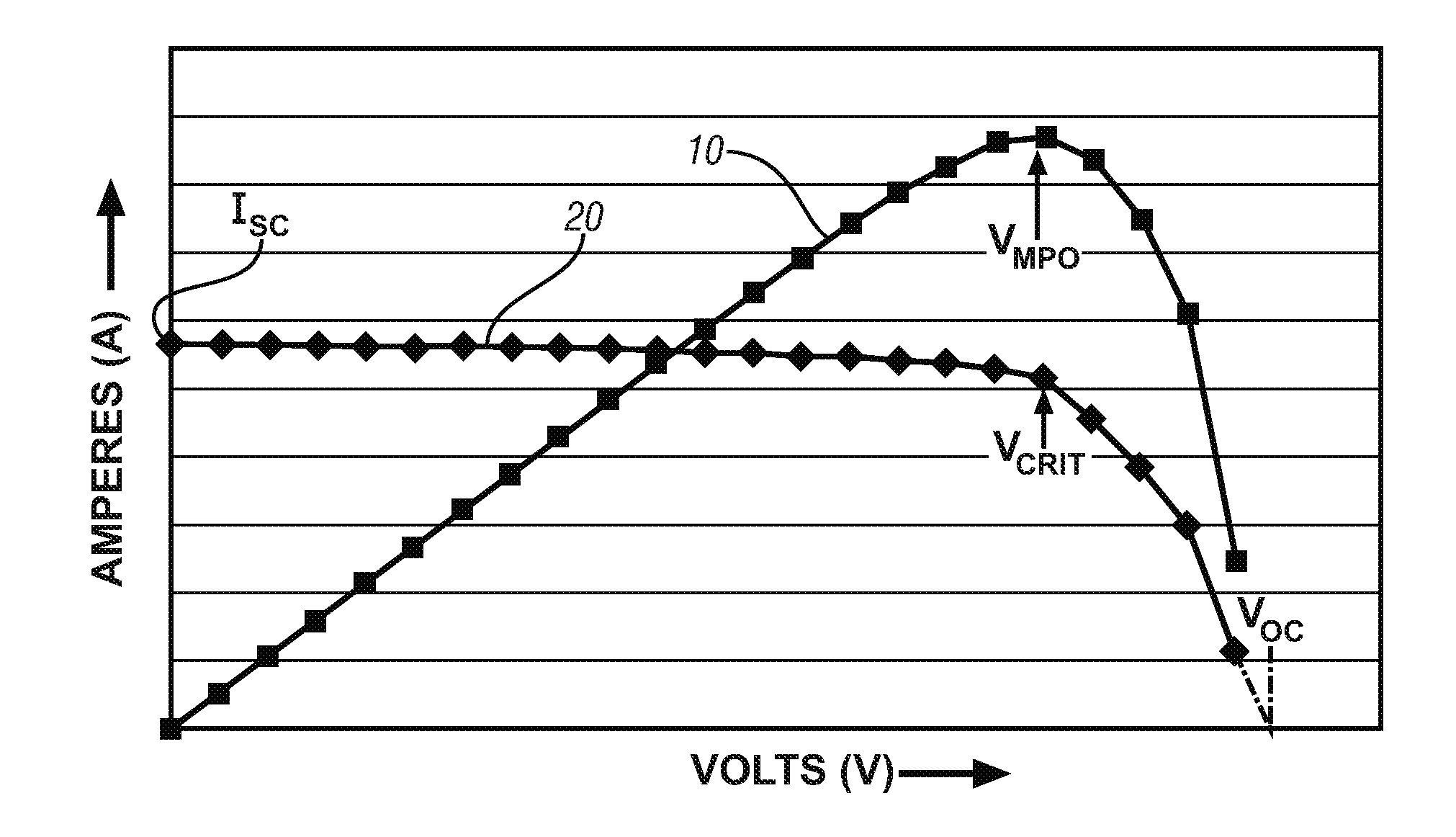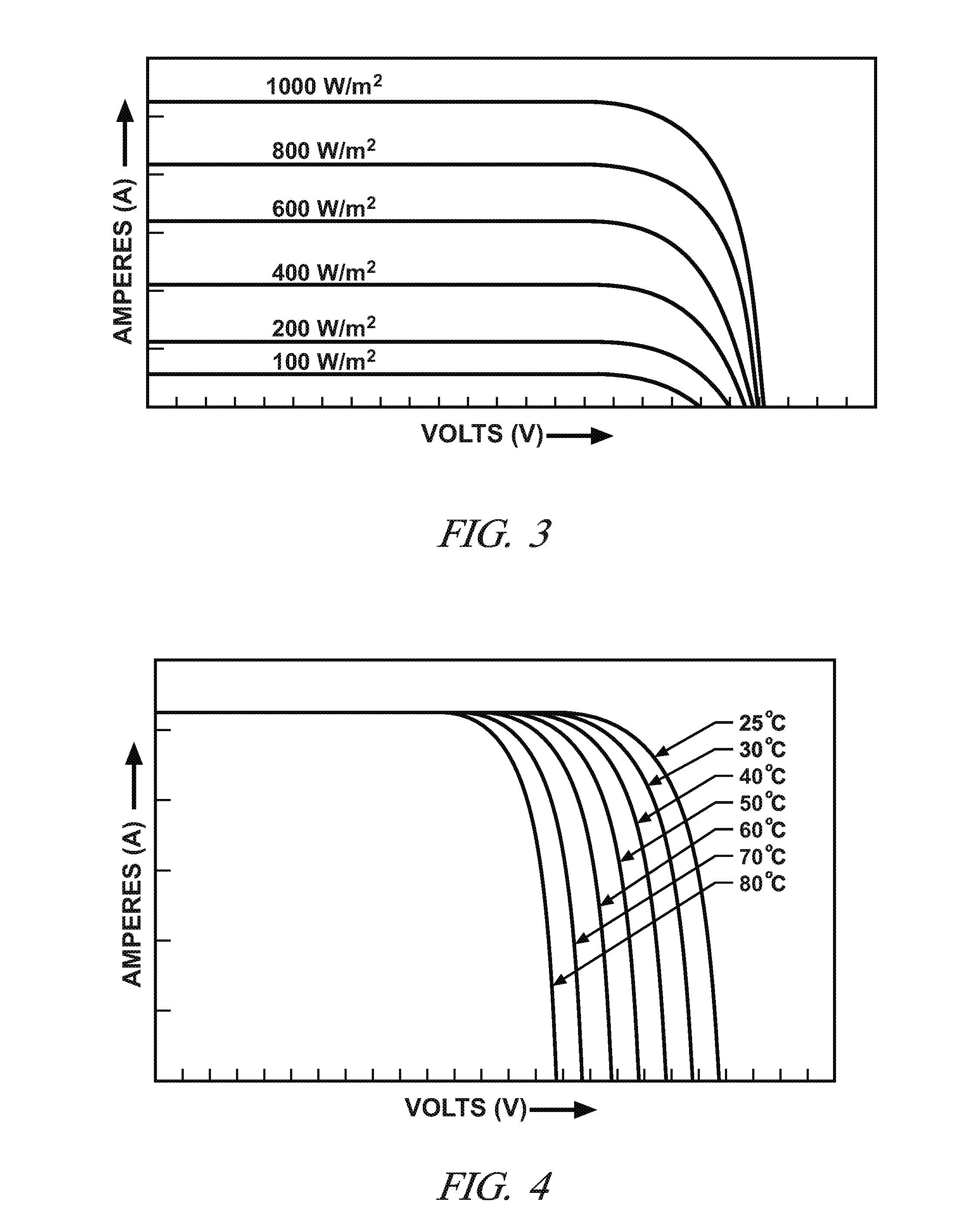Optimizing use of solar photovoltaic-generated electricity in electric or hybrid vehicles
a technology of solar photovoltaic and which is applied in the direction of electric energy management, propulsion parts, process and machine control, etc., can solve the problems of not fully utilizing the battery capacity of electric or hybrid vehicles, and achieve the effects of minimizing electrical losses, extending vehicle range, and minimizing electrical losses
- Summary
- Abstract
- Description
- Claims
- Application Information
AI Technical Summary
Benefits of technology
Problems solved by technology
Method used
Image
Examples
Embodiment Construction
[0020]Advances in photovoltaic (solar) cells have led to major increases in their output and have made such cells credible and practical sources of electric power. Solar cells are semiconductors and may be based on relatively simple chemistries like single crystal or amorphous silicon, or on more complex formulations like CdTe or CuInSe. Such cells are long lived and need only minimal maintenance. They may therefore be suitable for application as passive power-generating sources for vehicles. Particular benefit may be attained by application of solar electricity generation to electric or hybrid-electric vehicles where it may enable on-board generation of electricity to partially offset the reduced energy density of batteries relative to liquid-hydrocarbon based chemical fuels.
[0021]Static solar cell array systems may be positioned at a fixed orientation or incorporate devices for tracking sun position. Vehicle-mounted solar arrays may also adopt either of these strategies. Such vehi...
PUM
 Login to View More
Login to View More Abstract
Description
Claims
Application Information
 Login to View More
Login to View More - R&D
- Intellectual Property
- Life Sciences
- Materials
- Tech Scout
- Unparalleled Data Quality
- Higher Quality Content
- 60% Fewer Hallucinations
Browse by: Latest US Patents, China's latest patents, Technical Efficacy Thesaurus, Application Domain, Technology Topic, Popular Technical Reports.
© 2025 PatSnap. All rights reserved.Legal|Privacy policy|Modern Slavery Act Transparency Statement|Sitemap|About US| Contact US: help@patsnap.com



